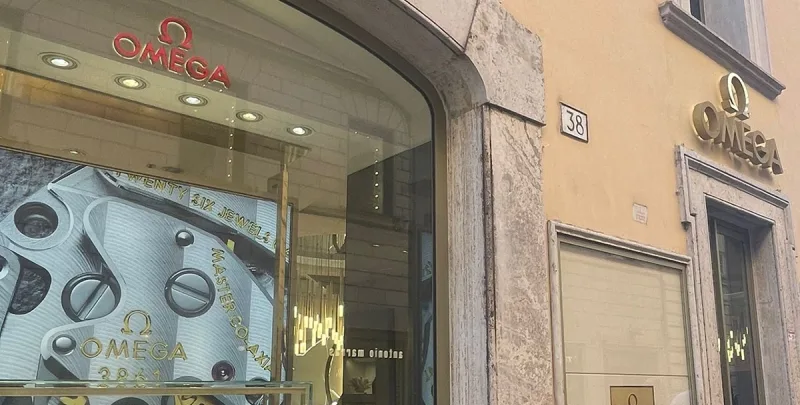How to Identify a Genuine Swiss Watch
Swiss
watches are famous the world over for their superior quality, but what
actually makes a watch “Swiss” and how can you tell you are dealing with
the genuine article?
There is no doubt that Swiss watches have an enviable reputation
throughout the world, a reputation that has been built up over many
centuries of dedication to the manufacture of watches and clocks. Swiss
manufacturers of whatever description, large and small are proud of
their heritage and continue to use the designation “Swiss” on their
products, realising that it is a well-established and recognised premier
mark of quality.
Needless to say this reputation is stringently guarded by the Swiss
government who have passed various laws over the years which permit
certain products to be designated as “Swiss” only under certain
conditions. The main piece of legislation (Loi sur la protection des
marques, LPM) allowed for the enactment in 1971 of the” Ordonnance du 23
décembre 1971 réglant l’utilisation du nom “Suisse” pour les montres”
The law is based on defining Swiss quality relative to the amount of
work on a watch actually carried out in Switzerland. The law does permit
use of “foreign” parts but states that the fitting out of the watch
(the assemblage of the movement with the hands, case, pushers and crown
etc.) and the final testing should all take place in Switzerland along
with at least 50% of the movement components (value) being manufactured
there.
The Swiss Watch
Only
when it can be defined as Swiss by the relevant law may the watch carry
the indications of Swiss manufacture. A watch can be considered Swiss
if:
• Its movement is Swiss.
• The movement is “put together” in Switzerland.
• The manufacturer carries out the final inspection in Switzerland.
Permitted designations are “Swiss made” or “Swiss” as well as the
logo of the producer or distributor, you may also see the following:
“Suisse”, “produit suisse”, “fabriqué en Suisse”, “qualité suisse” These
are usually seen at the six o’clock position on the watch face.
The Swiss Watch Movement
There is also a definition as to what constitutes a Swiss watch movement.
• The movement must be assembled in Switzerland.
• It has been inspected by the manufacturer in Switzerland.
• At least 50% of the movement components value (excluding the build cost) must be of Swiss manufacture.
If the movement meets these conditions but the watch itself was
assembled outside of the country, then the term “Swiss” may be noted on
one of the movement parts. On the watch exterior, the term “Swiss
movement” or “movement Suisse” made be used but only if written in full
and the words are in the same colour and typeface as the word “Swiss”
The job of “brand protection” falls to the Swiss Watch Federation
(Federation de I’Industrie horlogère Suisse FH. The FH uses the above
stated law coupled with later laws on the protection of brands and place
of origin to rigorously protect the good name of Swiss Watches.
Counterfeiting has always been a problem for the watch industry never
more than now with the ease of obtaining products via the internet.
Buying Tips.
• If
you are buying your watch from a retailer then you shouldn’t have too
many problems, the Swiss are particular who they allow to sell their
watches and you should expect “high end authorised jewellers” to be
selling the products who will supply you with a receipt for payment and a
certificate of authenticity.
• If you are buying online, do some research on the retailer and
source reviews from previous customers; this is fairly simple using
Google.
• Swiss watches are expensive, even if second hand, if the price
seems too low , then the watch is probably a fake, there are many
retailers online selling watches where it is not apparently obviously
you are buying a “replica”
• Having “provenance” is essential for an expensive watch, gone are
the days when you could simply tell the quality by the sweep of the
second hand, the latest “replica” Swiss watches often have automatic
movements and it may be difficult for anyone less than an expert to tell
the difference. Beware of any watch being sold without paperwork.
• Many “ replica” Swiss watches will come with tiny errors, often
deliberate such as misspellings with the name, slight alterations to the
logo or engravings which are of a poor quality. If you get the chance
to examine the watch, do so with a magnifying glass and this will help
you spot any errors or imperfections.
• Try looking for pictures or reviews of the watch online, this will help you spot any errors.
• Visit the manufactures website. Most have an archive with details
of the production watches they have manufactured. In some cases it may
be possible to match up serial numbers.
Obtaining a Watch Insurance Quote
Assetsure specilise in providing Watch Insurance for most brands of wristwatch. Our policy can cover single items without the need to cover the remainder of your home contents.


























